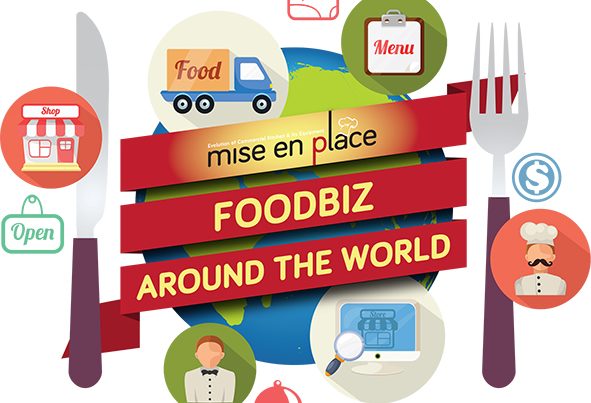
NORTH INDIA: THE LAND OF THE GODS
As the 7th largest country in the world and the largest country by landmass in Asia, India is further divided into two mega regions – North India and South India. In this issue of Mise En Place magazine, we will take you on journey through North India and then South India in the following issue.
From breathtaking, picturesque, and off-the-wall hill stations nestled in the Himalayan Mountains to architectural marvels, cultural offerings and mouthwatering local cuisines, North India is a pure delight for tourists, globetrotters, adventure enthusiasts and mountain lovers alike. Bestowed its ancient name, “Dev Bhumi”, which means “Land of the Gods”, this magnificent region with its towering peaks, glaciers, and vast dessert valleys was considered the abode of the Gods in ancient India.
Geographically, North India lies north of peninsular India. To its north are the Himalayas which mark the boundary between the Indian subcontinent and the Tibetan plateau and to its west is the Thar desert, shared between North India and Pakistan. Prior to the British Indian Empire and before India became an independent nation in August, 1947, this diverse northern region was once ruled by various Indian dynasties such as the Mauryas, Guptas, Mughals, and Marathas. Today, North India officially includes the Indian states of Jammu & Kashmir, Himachal Pradesh, Punjab, Haryana, Uttarakhand, Union Territories of Delhi, and Uttar Pradesh. Although Rajasthan, Madhya Pradesh and Bihar are not formally part of North India, yet these states are culturally and linguistically accepted as North Indian states. While the economy in this north Indian region is predominantly agragrian, it is quickly changing with rapid economic growth and social development.
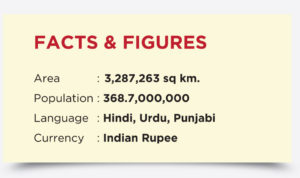
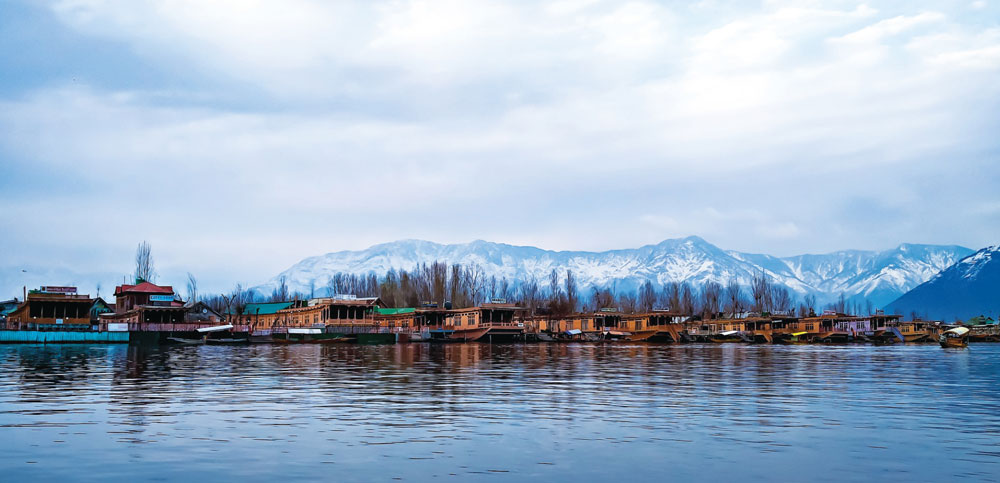
SRINAGAR
Considered as the summer capital of the state of Jammu & Kashmir, Srinagar is cradled perfectly in the heart of the Kashmir Valley. As a melting pot of culture and natural beauty, this picturesque yet humble state is home to majestic historal structures and architecture, scenic landscapes, and divine places of worship like River Jhelum, Dal Lake, Mughal Gardens and Jama Masjid along with other attractions that mark the resplendent beauty of the land. To embrace some of Srinagar’s culture and attractions, be sure to visit the Dal Lake, Jama Masjid, Hazratbal Shrine, or the Nishat Bagh Mughal Garden.
CHANDIGARH
Aptly named “City Beautiful”, Chandigarh is considered India’s best planned city with architecture which is world-renowned, and a quality of life that is unparalleled. As the capital city of the states of Punjab and Haryana, the Union Territory of Chandigarh is a prosperous, spic and span, green city. As the face of modern India, this prestigious city is a rare epitome of modernization co-existing with nature’s preservation where the trees and plants are as much a part of the construction plans as the buildings and the roads. When visiting this green city, be sure to stop by the Rock Garden of Chandigarh, Sukhna Lake, or the Zakir Hussain Rose Garden.
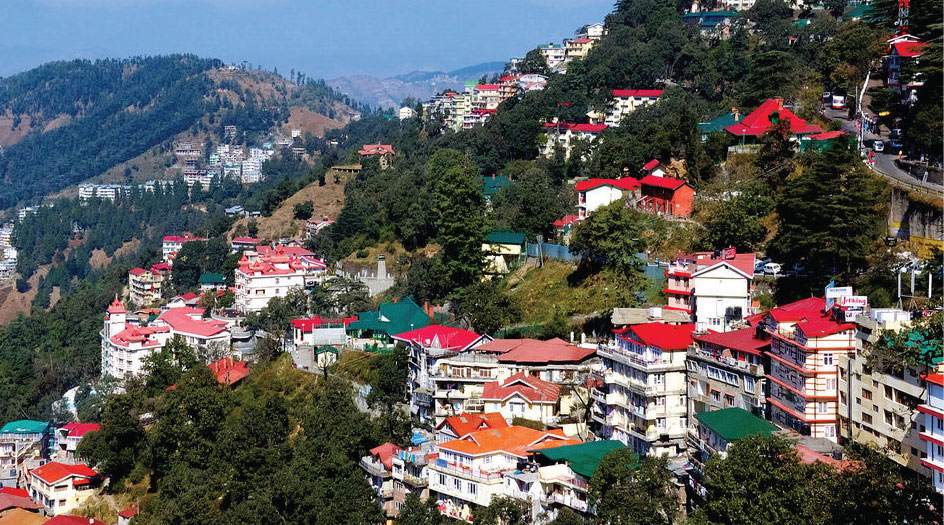
SHIMLA
Surrounded by picturesque green valleys, snowcapped Himalayan mountain ranges, scenic hills, and spectacular structures built during the colonial era, this beautiful hill station in the state of Himachal Pradesh exudes an aura of regal India and houses numerous attractions in its vicinity. From regal buildings, eateries and shopping centers to hotels, scenic locations and snowy hills, everything about holidaying in Shimla is unique and astonishing. So, plan your trip here and stop by some of these beautiful places on your way: The Ridge, Reserve Forest Santuary, the Kalka Shimla Toy Train, or the Jakhoo Temple in Jakhu Temple Park.
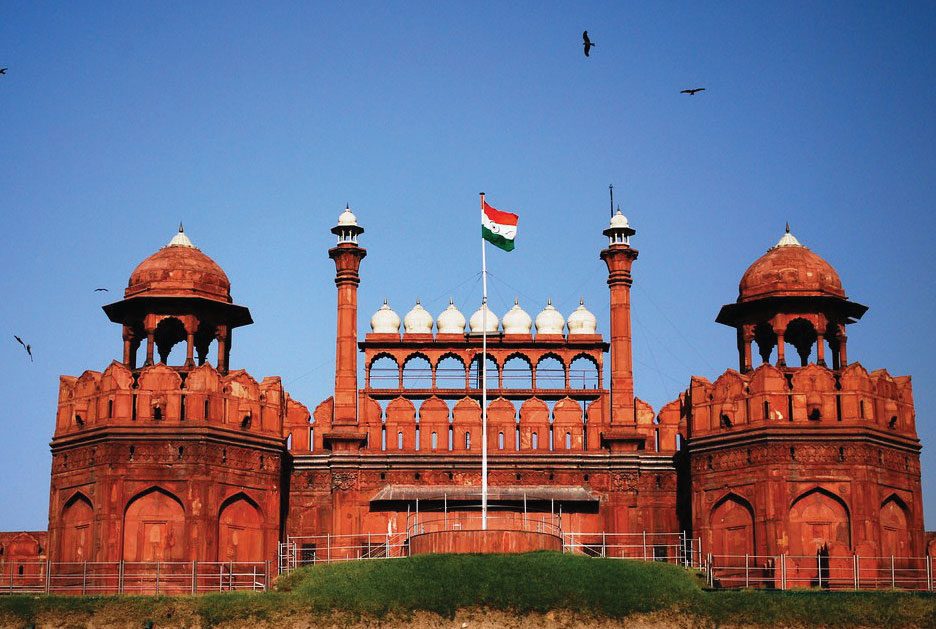
NEW DELHI
As the heart, soul and imperial capital city of India, New Delhi is a magnetic attraction. Not only is this populous city India’s busiest international gateway, it is also important as a religious centre, and steeped in a heady mix of tradition and modernity. Visitors and tourists to this bustling, vibrant city can enjoy the diverse arts and crafts industry, magnificent monuments, countless performing arts venues, and excellent cuisines, including delicacies from every part of India. New Delhi is also a shopper’s paradise with numerous bazaars and markets including Chandni Chowk, the country’s most famous commercial area. If you are in New Delhi, do visit the Red Fort, Humayun’s Tomb, the Lotus Temple, or the Lodhi Garden.
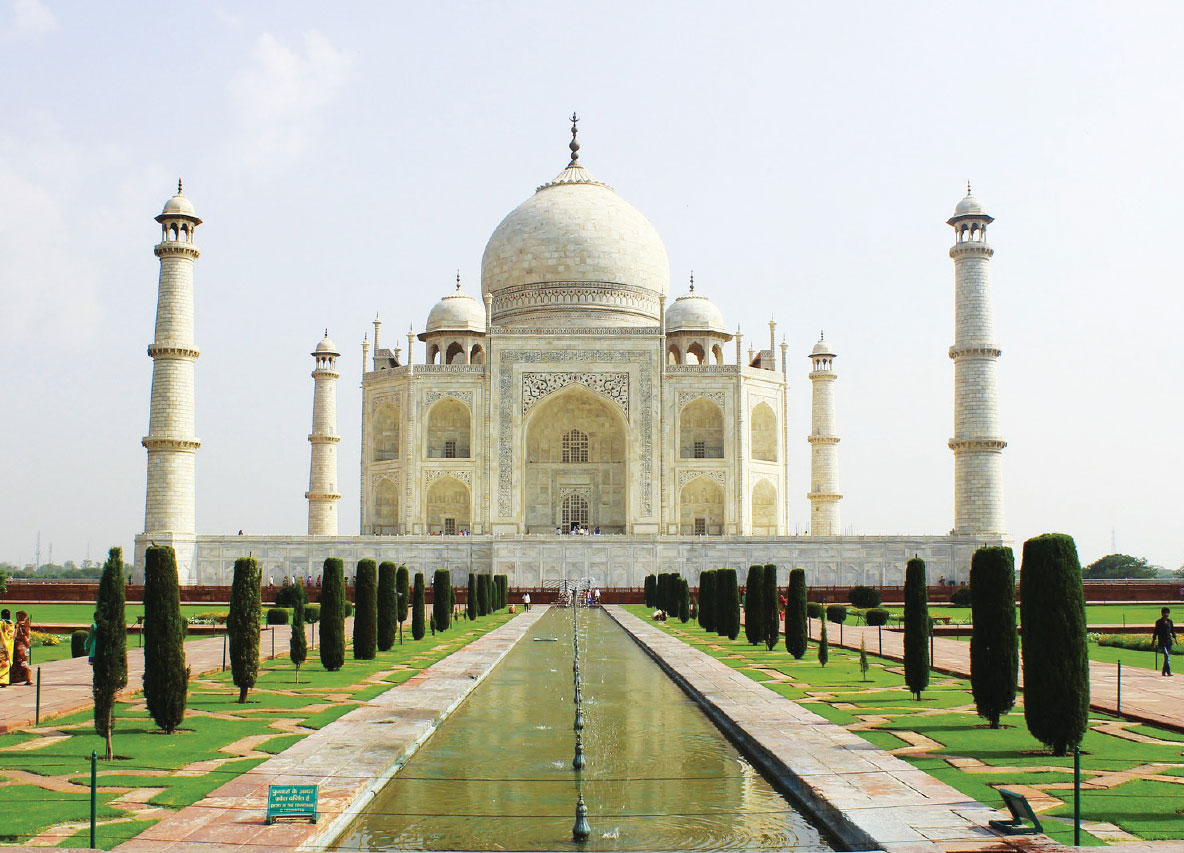
AGRA
As the seat of the Mughals for ages, Agra in the northern city of Uttar Pradesh offers its treasure trove for all tourists from India and abroad. The biggest draw to Agra is the Taj Mahal, the epitome of love in white marble but it is not the only standalone attraction. The legacy of the Mughal empire has left a magnificent fort and a liberal sprinkling of fascinating tombs and mausoleums, as well as some bustling chowks (marketplaces). If you are in Agra, be sure to visit the he Agra Fort in the city, the Fatehpur Sikri and of course, the Taj Mahal.

FOOD IN NORTH INDIA
Not only is North India characterised by its diversity through its amalgamation of different cultures, tradition and lifestyles, the food in this country is equally diverse. North Indian food is richer than other Indian cuisines as the foods are prepared using pure ghee or doused in fresh cream. The availability of a plethora of vegetables, fruits, grains and spices make this cuisine vibrant and colourful.
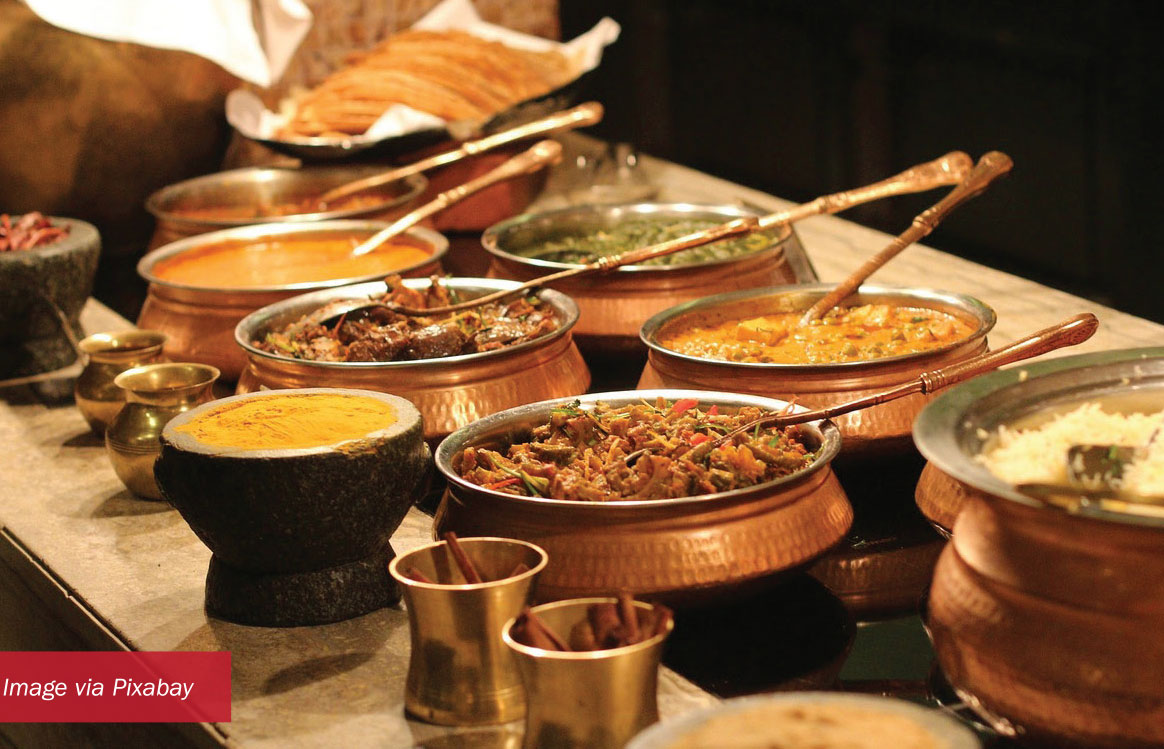
Local Offerings
When travelling to the north of India, you will come across prominent dishes that feature breads such as naan bread, rotis, and samosas, curries such as palak paneer (spinach and cheese), aloo ghobi (potato and cauliflower), and the like. Garam masala is the predominant spice mixture used and some sauces are accented with the use of dried fenugreek leaves. Without further ado, let’s explore some of the delectable dishes that North India has to offer.
Chole Bhature – There is nothing better to satiate the pangs of hunger than a mouth-watering deep fried Bhature (leavened bread) served with a spicy chick pea gravy or Chole. To take this simple dish to whole other level, a dollop of butter and a dash of lemon juice is added. Though this dish originated from the north-western part of India, it has evolved to become a favourite of millions across the country and beyond.
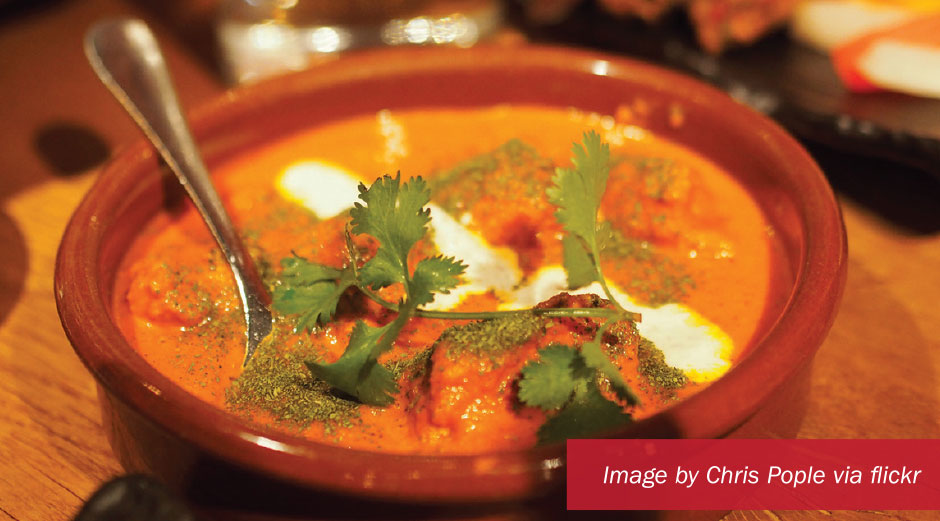
Murg Makhani (Butter Chicken) – As one of the most popular Indian dishes ever, not only in India but abroad as well, this spicy Butter Chicken gravy is best eaten with an Indian bread like Naan or Rumali bread). The chicken is cooked in butter till tender and flavoured with fenugreek leaves (kasuri methi) while the gravy is prepared with fresh cream, making it an absolutely divine dish for non-vegetarians. The infusion of spices, especially the Kashmiri red chili powder gives the dish a tantalising colour. One serving of this delectable dish is enough to leave you craving for more.
Tikka Masala (Tandoori Chicken) – Similar to roast chicken, Tikka Masala is prepared by roasting chicken that is marinated in yougurt and spices in a cylindrical clay oven (Tandoor). To form the fiery red colour on the chicken, spices like cayenne pepper, red chili powder or Kashmiri red chili powder is used in the marination. Despite its black streaks of char, tandoori chicken is juicy, tender and flavourful with just the right amount of heat and spicyness.
Rogan Josh – Originating from the Kashmir valley, this signature dish is an all-time favourite for meatlovers. Literally translated to mean ‘red lamb’, Rogan Josh gets its colour from Kashmiri dry red chilies. While the name may sound fiery, the heat of the dish is toned down by the cream that is added at the end. If lamb is not available, goat can be used as a substitute meat for this dish. This delectable North Indian dish is often served with a side of plain basmati rice or naan, or both.
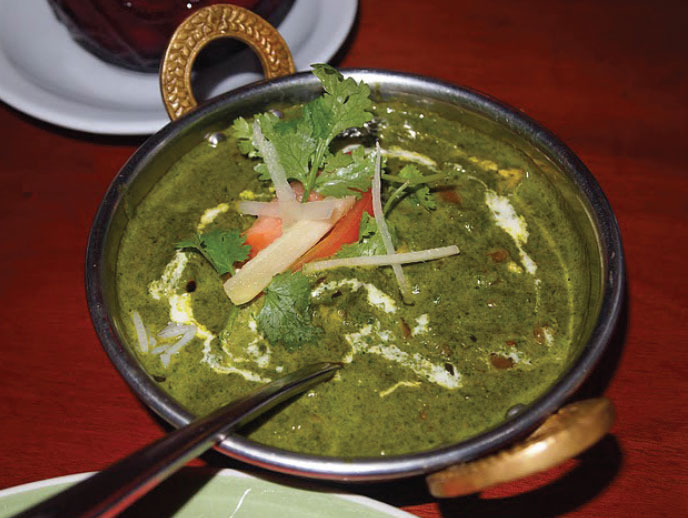
Palak Paneer – Another absolute favourite North Indian dish, Palak Paneer is also super healthy as it is made with nothing more than spinach (palak) and cottage cheese (paneer), along with the typical Indian spices. The panner is usually cut into small cubes and pan-fried first, giving the dish a nice texture while the large portions of spinach and fenugreek leaves gives the dish a deep green hue. This delicious mildly flavoured dish tastes even better when eaten together any Indian flatbread.
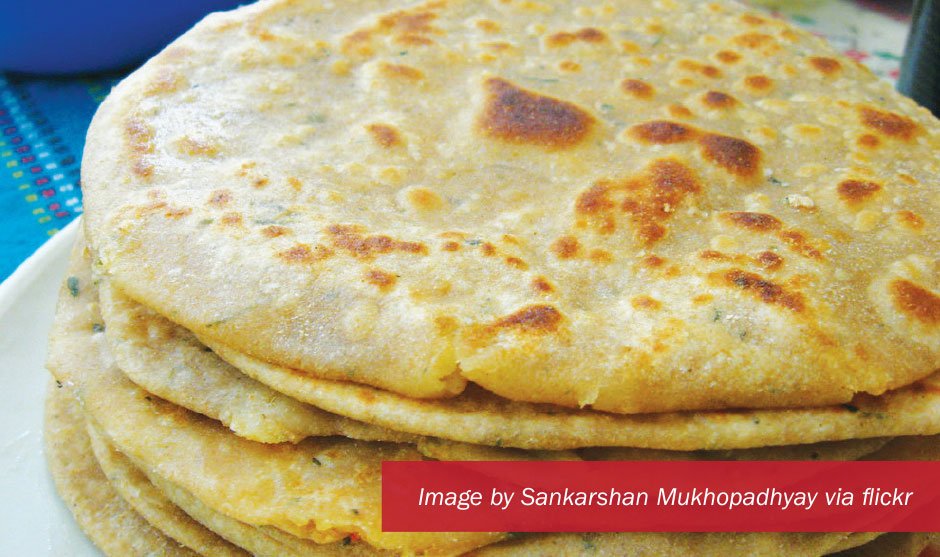
Paratha – Most North Indian dishes are never complete without the accompanying sumptuous parathas. Relished with curries, dhal, yogurts or pickles, this crispy, flaky buttery thin flatbread is a real treat. To make parathas, whole wheat flour is kneaded using salt, oil and water and the dough is then rolled into layers and cooked on a hot griddle with some ghee or oil. Parathas can also be stuffed with a savoury filling or a combination of fillings like aloo (potato), gobi (cauliflower), onion, paneer, or even chicken for those who are non-vegetarian.
Rajma Chawal – If you are in need of some comfort food, there is nothing better than a piping hot plate of Rajma Chawal. The iron and protein rich Rajma (red kidney beans) served with steamed rice (Chawal) or any Indian bread makes for a wholesome meal. Soaked overnight, the Rajma is slow-cooked in simmering gravy so that the beans soak well in the masalas. Adding a dollop of fresh cream to the sauce takes this popular Punjab dish to a whole other level.
Lassi – Known as a smoothie in the west, this famous North Indian refreshment drink is usually enjoyed at the end of a meal or during the hot summer months. A sip of sweet lassi, topped with a generous dollop of clotted cream, is hard to resist. Made from yogurt blended with water and spices or different flavours, this drink is best enjoyed in a kulhad (glass made of clay). There are various types of lassis that you can choose from, such as the fruit flavoured lassi or the traditional sweet or salty lassi.
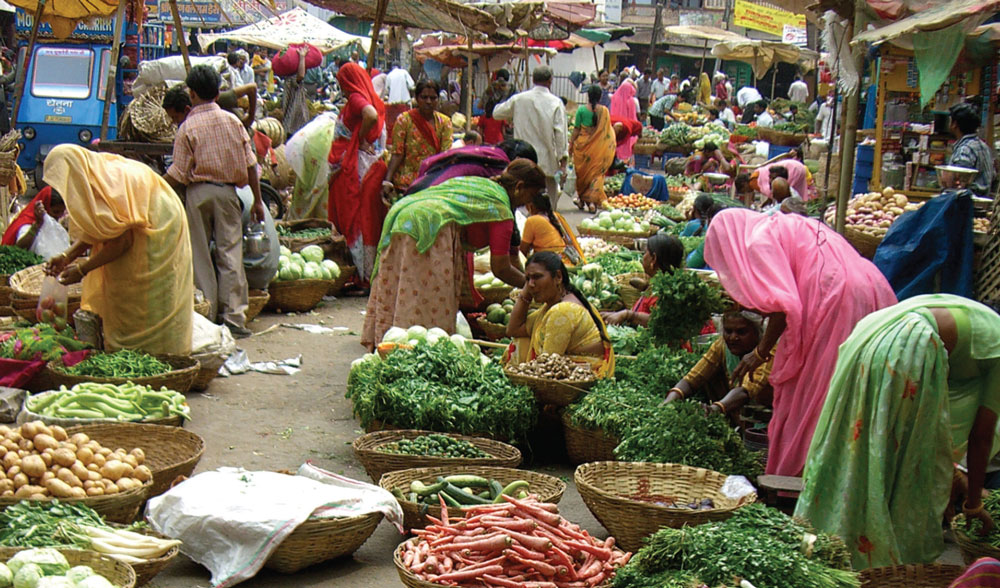
Street Markets
If you are looking for an authentic shopping experience in Northern India or simply want to buy some traditional items at affordable prices, then look no further than the multitude of street markets that line the many streets in these north Indian states. A wander through the labyrinth traditional markets is the way to go. Street markets have been a vital part of Indian culture, trade and social life since Mughal and British era.
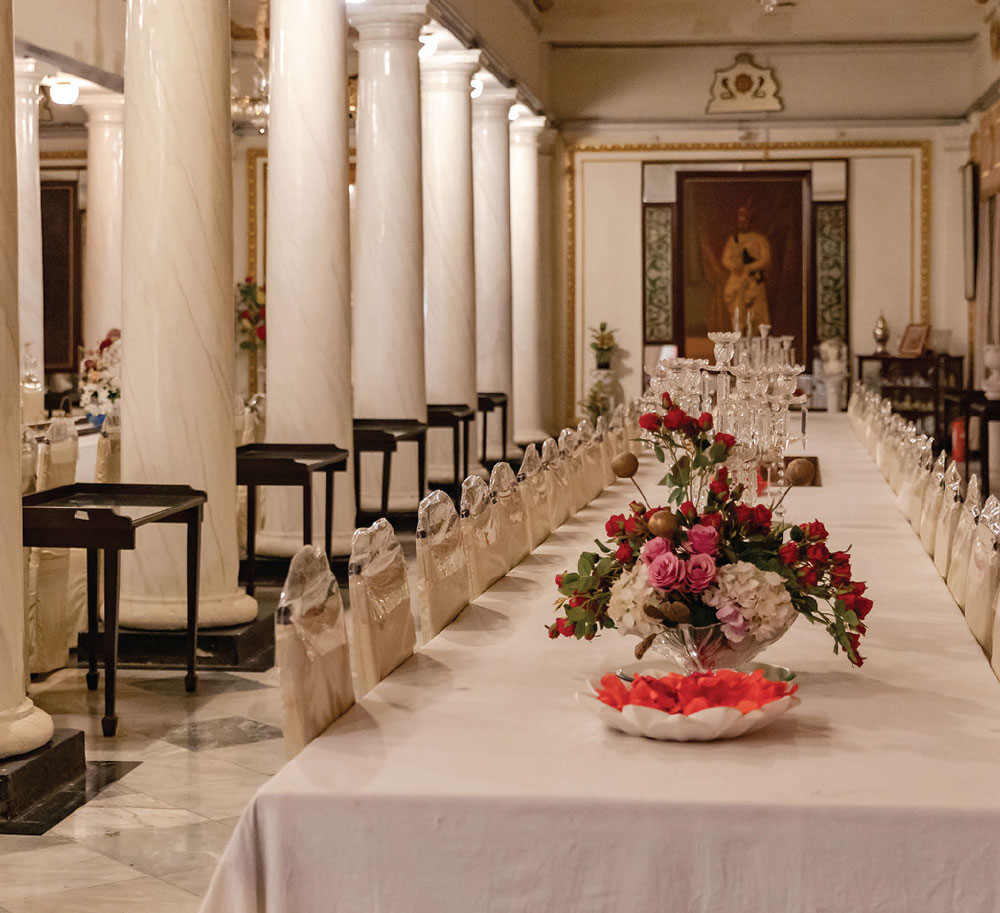
FINE DINING
Paying tribute to the rich history of gastronomy, fine dining restaurants in North India continue to up their game in the culinary arena every year. As always, there is tough competition between popular restaurants and choosing the best amongst the lot is not always easy as good food is not the only parameter. Taking into account the service, ambiance and vibe in addition to great tasting dishes, there are several fine dining restaurants in the northern region that offer a delicious and enjoyable dining experience. These include the Indian Accent in New Delhi, the Pinch of Spice in Agra, Jal & Jalebi – Fine Dining by the Ganges, and the Bukhara and Wasabi by Morimoto in New Delhi.
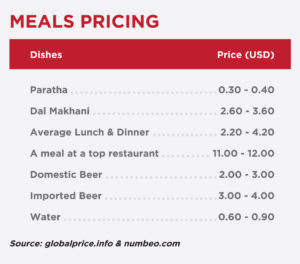
Coming from a largely agragrian economy, the northern regions of India have gone through a myriad of changes in terms of infrastructure development, manufacturing and services. In fact, the upper States have consistently outperformed India’s national GDP. While economic growth and foreign investment inflow has grown significantly in these regions, the full potential in business opportunities in the northern States and Union Territories have been largely untapped. With unprecedented economic liberation, states in North and South India are now granting overseas investors more access to its vast and varied market than ever. However, despite their vast economic potential, traversing the diverse and complicated business landscape can be a daunting task without the right help on board and some local knowledge.
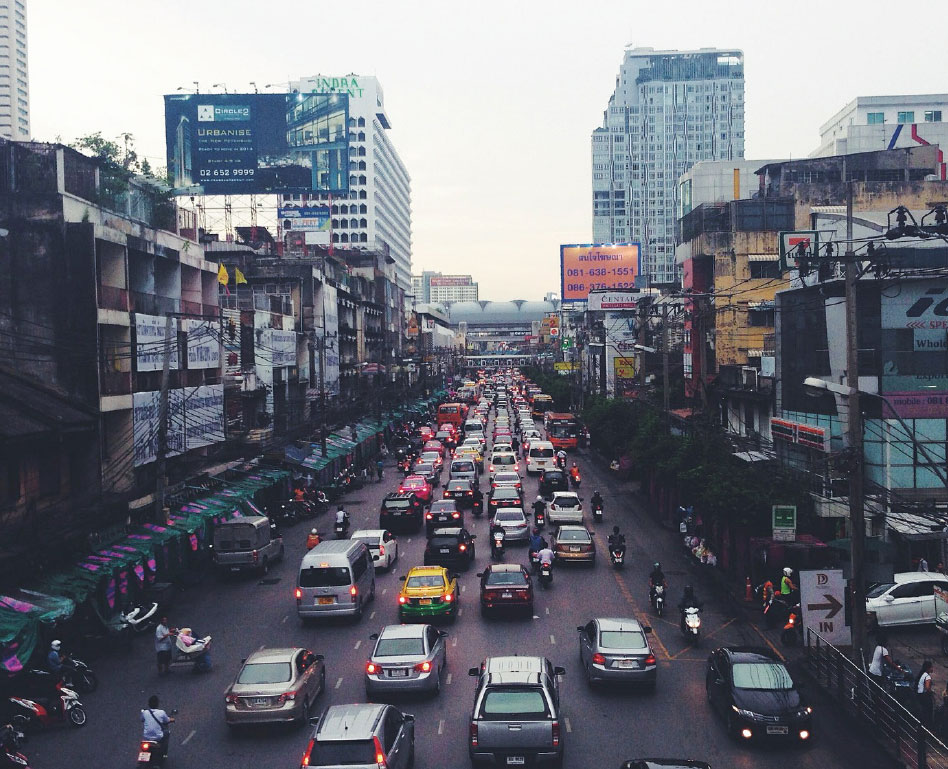
Forms Of Business Entities In North India
Foreign companies or individuals who do not have local residency in North India have a number of channels for setting up and registering a business or company in this region:
Public Limited Company
• Has a minimum number of 3 Directors and 7 shareholders but an unlimited number of shareholders.
• It can either be listed on the Stock Exchange or remain unlisted.
• The public is invited to subscribe to its shares.
• If it is listed, its shareholders can freely trade thecompany’s shares.
• Requires a minimum paid up capital of Rs 5 lakh or any higher amount that may prescribed from time to time.
• Incorporating a Public Limited Company can be difficult and time-consuming.

Private Limited Company
• Can have a minimum 2 and maximum of 15 directors and a minimum of 1 and maximum of 50 shareholders.
• Does not invite public to subscribe to its share capital.
• Restricted right to transfer its shares
• Requires a minimum paid up capital of Rs. 1 lakh or any higher amount that may prescribed from time to time.
Joint-Venture Company
• A business arrangement in which foreign investors and Indian investors pool their resources together to accomplish a specific task or project through a JV company.
• The investors jointly share the profits, losses, management responsibilities, and operation expenses.
• As an advantage, the foreign investors can utilise the well-established contact network, distribution, marketing channels and the available financial resources of the Indian investors
Partnership Firm
• A type of Joint-Venture Company in which two or more parties enter into an arrangement to manage and operate a business and share the profits.
• The owners of a partnership firm are individually known as partners and collectively known as a firm.
• A minimum of two peoples are required to start a partnership business. The maximum number of partners is 10.
• The partners have unlimited liability and can share profits in any mutually agreed ratio.
• The registration of a partnership firm is not compulsory.
Sole Proprietorship
• A form of a business entity where a single individual handles the entire business organization and is the sole recipient of all profits and losses (unlimited liability) of the business.
• Setting up a Sole Proprietorship requires less legal formalities as it does not have a legal existence.
Limited Liability Partnership (LLP)
• As another type of Partnership arrangement, a LLP is corporate entity where the liability of at least one member is unlimited whereas the rest of the members have limited liability, limited to the extent of their contribution in the LLP.
• Requires a minimum of two partners and a minimum of two individuals as Designated Partners, one of whom must be a resident in India.
• It is governed by Limited Liability Partnership Act of 2008.
Branch Office
• Foreign companies that are engaged in manufacturing and trading activities overseas can set up Branch Offices in Northern India.
• A Branch Office is not allowed to carry out manufacturing activities or commerical activities of any nature on their own but can subcontract those to an Indian manufacturer.
• The Branch Office requires an approval from the Reserve Bank of India (RBI) before commencing operations.
Project Office
• Foreign companies can set up a temporary project office(s) in North India for carrying out activities related to that specific project.
• This office is not allowed to carry out any other work apart from those specified at the time of establishment.
Liaison Office
• This is a type of representative office that is set up to understand the business and investment environment in Northern India.
• It is not allowed to engage in any commercial, industrial or trading activity.
• Its main role is limited to collecting information about possible market opportunities, sources of supply, providing information about the parent company and its products to prospective Indian customers or vise versa to its vendor.
Subsidiary Company
A wholly-owned subsidiary company can be set up in North India in sectors where a 100% Foreign Direct Investment (FDI) is permitted. The wholly-owned subsidiary can be either one of these following business entities:
• Private Ltd Company
• Public Ltd Company
• Unlimited Company
• Sole Proprietorship
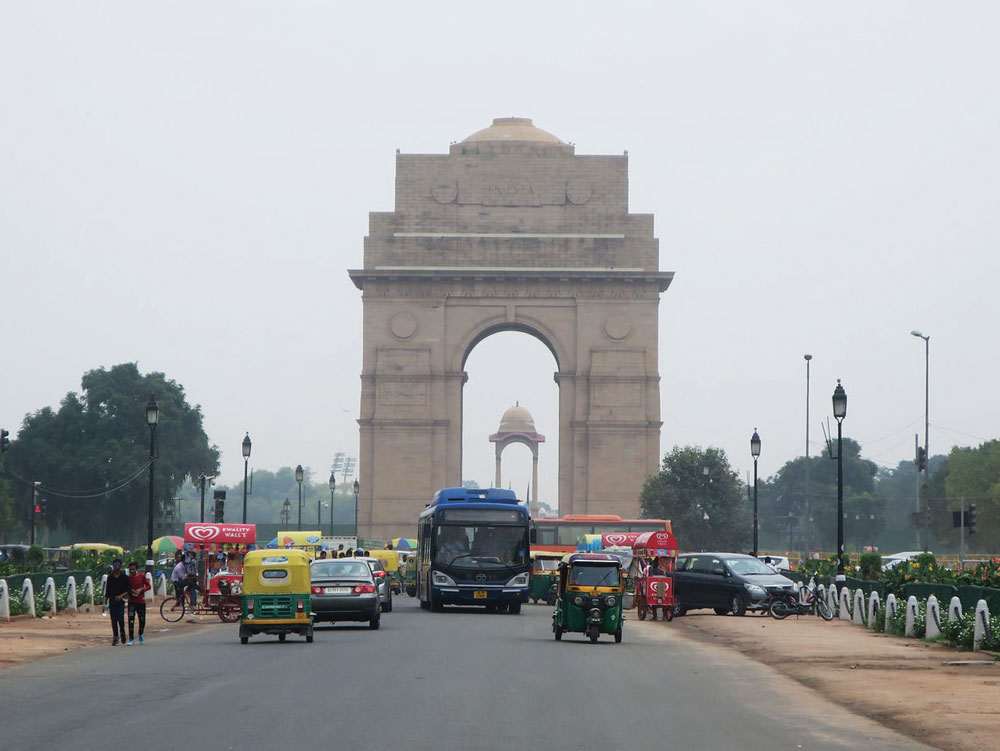
UPCOMING EVENTS
SIAL INDIA
Date : 19-21 September 2019
Venue : Pragati Maidan, New Delhi
SIAL INDIA is the World’s No.1 food innovation network in India. With international buyers coming from ASEAN, the Gulf and other countries like Thailand, Korea, this exhibition will feature alcoholic and non-alcoholic beverages, processed food, bakery products, baby food, dairy products, fine foods, fruit and vegetables, organic and health products, sweets and confectionery, wine and many more.
AGRI FEST 2019
Date : 19-21 September 2019
Venue : RBML College Ground Telibagh Chauraha
AGRI FEST 2019 is 8th edition of the international exhibition on agriculture, dairy, poultry & food. The show is an excellent platform to introduce your most recent products in front of a wide range of attendees at the show. It will also provide a channel for professional experts to share valuable experience, knowledge and innovative ideas in their respective fields in the industry.
DELHI INTERNATIONAL TRADE FOOD FAIR 2019
Date : 02-06 October 2019
Venue : EXPO Center Noida
The Mega Fair aims to bring together the best in the various industry segments and provide a perfect platform for brand promotions at a minimum at a minimum cost and provide the visitors an opportunity to experience, taste, feel, use new products and develop new loyalties. DITF – Delhi International Trade Fair brings together the best in the industry. With over 100,000 products on display, DITF is the ideal platform for artisans, weavers, bunkers, hastshilps, corporate.
WORLD OF WINES & SPIRITS
Date : 22-24 Nov 2019
Venue : NSIC Exhibition Complex, New Delhi
The World of Wines & Spirits Delhi is an international exhibition which brings together attendees and provides them with the opportunity to explore the exhibits of wines, beers, sparkling wines, IT for retail & gastronomy, spirits, whiskey, vodka, rum, accessories for retail & gastronomy, bar utensils, glasses, wine racks, bottle coolers, decorative bottle stoppers, furniture & equipment, and much more.
PACPROCESS INDIA & FOOD PEX INDIA
Date : 12-14 December 2019
Venue : Pragati Maidan, New Delhi
Trade visitors at this exhibition will have the opportunity to network with industry colleagues and meet potential business partners whilst experiencing sustainable packaging initiatives, leading products, services and solutions, and the most cutting-edge machinery and equipment. The exhibition will cover the entire gamut of packaging, food processing and the beverage industry all under one roof so the visitors will not have to be dependent on other small events for their packaging needs.
DRINK TECHNOLOG INDIA 2019
Date : 12-14 December 2019
Venue : Pragati Maidan, New Delhi
Drink Technology India 2019 is an International Trade Fair for Beverage and Liquid Food Technology. The show will feature Aseptic systems, filling and packaging materials, PET technology, process technology and process automation, raw materials, raw additives, restaurant and catering equipment. The event provides the best solutions for all exhibitors and visitors to develop new ideas for their business and to meet professionals from leading organizations.







